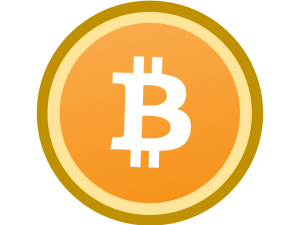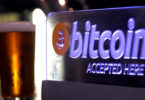The increasing use of Bitcoin and crypto-currency is changing the nature of transactions today
As students of economics, we have studied the systems of barter that got morphed into more sophisticated modes of exchange, using coins and notes. This gave rise to this existing currency market. The amalgamation of technology and economic growth has led to digital mode of transaction. The growth and usage of credit cards, net transfers, online banking solutions are posing a threat to the actual physical transactions that require cash.
As such, the digital world of money has taken a new turn. This change comes in the form of crypto-currency called bitcoin which not only renders the actual money transactions as transient but also poses a threat to the entire monetary system that the countries of the world are based on.
Bitcoin is a digital version of our currency notes and coins that can be sent through the internet using the current exchange value in local currency. It was introduced as recently as in the year 2009 by Satoshi Nakamoto, but it is a fictitious name; nobody knows whether it is the work done by an individual or a group.
Perhaps this is deliberate on the part of the creator so as to emphasize the anonymity aspect. Bitcoin transactions are like mobile phone messages; they can be transferred directly from one person to another without proving to an intermediary like a bank as to who you are. This reduces the cost of transaction drastically, that otherwise accrues to the mediating institutions. Does it mean that bitcoin is a threat to monetary systems across the world?
Bitcoin as a technology
The first thing that comes to anyone’s mind is the source behind bitcoin. Who owns it? The answer is simple, that is similar for any open-source software, nobody, and everybody. Because there is no central agency backing-up bitcoin, it has become the epitome of decentralization. To make things clearer, the “banks” backing-up bitcoins are essentially the members of bitcoin system-You and I. Moreover, bitcoins are not pegged with precious metals like gold or silver in order to determine its value. Bitcoins take us back to the rules of free-markets where its value is determined by its popularity, demand and supply. Thus, the bitcoin system in the truest sense lionizes the system of laissez-faire that was propounded centuries ago and is still championed by many.
It is peer-to-peer electronic cash. As every digital product can be copied infinitely, digital money could never emerge seriously but bitcoin solves that for the first time in history. Not even a bit of it can be double spent.
Every transaction is recorded on a distributed ledger and confirmed every ten minutes, so as to weed out any such visibility. Every connected smartphone or a computing device is itself a banking terminal and the entire network double functions as a clearing house too.
Anybody holding a digital key is holding the bearer asset called bitcoin. Possession of something digital is the real game-changer. No mediator is needed for a transaction. All transfers are direct.
Though it is not gold but a simple way of understanding bitcoin would be equating it with a digital version of gold and gold mining. The way gold is mined, and there is some cost attached to the process, similarly bitcoins emerge after mining done by miners who run sophisticated software on their heavy hardware machines. They constitute an integral part of the system of bitcoin. Just anyone who has the technical and mathematical competence to solve algorithms is eligible to be a bitcoin miner.
Bitcoin miners are the intermediaries who do the processing of the transaction and in turn receive a small sum, in bitcoins for the same. Miners can either mine the coins individually (which is not very simple), or they can join pools of existing miners such as Slush, BTC Guild, Bitminter etc. After every ten minutes, the entire network creates a block worth 25 bitcoins.
Once a pool is able to mine the block, it is awarded Bitcoins that in turn can either be distributed or kept within the pool. The incentives get distributed according to individual contribution to the mining process. The better and faster mining equipment a person has, the more he/she gets in terms of share.
Miners don’t just mine new bitcoin rather their actual job is to maintain the registry of transactions done with Bitcoin. The entire system runs on a network of ‘nodes’. These nodes are individuals who are connected to the internet and happen to be in possession of, and running, the bitcoin software. Whenever there is a transaction that takes place within the bitcoin community, the information gets recorded in a ledger in these ‘nodes’. This ledger is called a blockchain. Miners verify the longest of these chains carrying true transactions and thus stop any case of double spending. They act as the security managers of the system too.
Bitcoin as a fractional currency
Bitcoin is new and fast, but it is so much new and fast that one almost gets afraid. This is because of the design behind it. It is not just a technology platform or a money-like virtual commodity rather it is entirely a new paradigm of money.
The way we have understood money since the beginning of 20th century is cloaked inside the vast structures of a nation-state. Here, money is a matter of national proprietorship. A nation can decide what form of money to choose. The Central Bank, an agency of nation-state performs the basic monetary functions like issuing money, distributing and managing it via government and banks. The prices of goods generally increase and that is good for the manufacturers and service providers. If the purchasing power of money is decreasing per unit because of inflation, it is considered not bad rather it is tolerable though in small quantities.
Bitcoin absolutely destroys this kind of thinking. It is money created out of a virtual network that works on the mathematical principles derived out of game theory. No single individual or a group can control it. It cannot be increased beyond a certain limit as the upper limit of issuance is pre-fixed at 21 million. Its value does not decrease rather it increases continuously on a general basis.
The fact is that it is a sustained deflationary currency but despite that, it is unique because it is both divisible and fungible. One unit of bitcoin can be divided into 100 million fractions called Satoshi. In a way, the total number of units that are fungible are 21 x 1000,000 x 100,000,000= 2100 trillion satoshi. If we divide this figure by the current population (7.3 billion) of the world, the per capita volume of satoshi would come out to be 2, 87,671. The current fee per bitcoin transaction is 10,000 satoshi. It means that every human on this planet can conduct over 28 minimum transactions with bitcoin. The probability of transactions reaching millions is not remote.
Even if we assume that one day, a billion people would use bitcoin, the availability of micro-units of bitcoin (i.e. satoshi) is so abundant that its adoption can keep on increasing for a good number of years, decades or even centuries. Some people also called bitcoin aristocracy may have hoarded it but eventually, they will use their own bitcoin too as a currency is meant to be exchanged. Bitcoin cannot be used for jewellery like gold. In theoretical terms, the utility of bitcoin does have the scope of reaching all people connected with the internet. It is truly a global currency that does not need any bank or any government.
Bitcoin as global money
If bitcoin is ideal money for people, why have they not been adopted yet on a mass level? On blockchain.info, if we see the number of bitcoin transactions per day, it is over 1,30,000 bitcoin transactions per day as on 6th August 2015. In less than five years, this figure has jumped over 100 times. Let us assume that average fees charged per transaction today is around five cents.
Assuming the rate of $300 for each bitcoin, five cents comes down to 16667 satoshis (100,000,000/300×20). Five cents is a pretty low cost that anybody would be happy to pay for. Let us understand it in terms of Indian experience. Five cents comes down to around three rupees which means one rupee can buy above 5000 satoshis. It means that cost of a global transaction can be less than five rupees. In a country where a global ISD call costs above Rs. 10 per minute, this cost is quite less. India alone gets $70 billion of global remittances per annum from its immigrant population working in UK, US, Canada, Australia, New Zealand, UAE, Saudi Arabia and other countries.
The minimum average fee per remittance is around Rs. 300. It means that bitcoin transaction can cost just 1% of the existing cost. If we scale up this case to the global level, the global remittances market is $600 billion per year. The transaction charge is sometimes 2% to 12% of the total transaction amount or a minimum of $5 and even higher in some cases. Poorer a country, higher is the service charge. It is expected that nearly $50 billion dollars of service revenue can be transferred back to the poor people with this technological shift.
Source: blockchain.info
Currently, this market is ruled by intermediaries like Western Union, Money Gram, and others. Their only advantage is ensuring almost-real time payments. The moment a user gets an SMS from the Western Union, he/she can go to the nearest agent to receive money. Banks cannot make such fast payments within the current regime of compliance and inter-bank regulatory norms. They are out of this big market because they take 3 to 5 business days to complete cross-border transactions. This delay of payment is something that puts the poor at a disadvantage as they need money in real time. Govt. approved third parties make a massive opportunity out of this gap.
This is a business secret that everybody in the bitcoin community knows and time is not far when there would be good and affordable solutions.
The actual availability of bitcoin is a big challenge for most of the consumers as bitcoin exchanges are not available in most of the countries. This is a big hindrance in the way of mass adoption of bitcoin. There are start-ups that are trying to develop products and models to crack this problem, and some success is possible soon. Let us assume that sometime in 2016, some message app ties up with a payment app and converts itself into bitcoin transaction app where it offers every transaction at a fee of 10000 satoshis only. Nobody needs to buy bitcoins rather it provides an automatic conversion from local currency into a bitcoin and vice-versa through a digital wallet.
Before the governments actually notice this change, there happens enormous network effect as millions of people start paying and sending global remittances in bitcoin through this app. In a very short period, the number of transactions per day crosses 100 million. People actually support bitcoin based transactions in a big way because it solves a real problem faced by the global society. Bitcoin may not become a mainstream currency, but its possibility of becoming an app-coin is really high.
It is at present the best global framework for reliable and fast cross-border payments. In such a case, the number of transactions may not be around 100,000 rather they may be several hundred of millions per day. Even if bitcoin rises five times from the current rate, the cost would be quite reasonable as compared to what third parties charge today. This bottom of the pyramid of global transactions is what can emerge independent of state control in coming years.
Whatever has been managed by banks or government approved third-parties may now move on to OTT players which are very difficult to control. OTT route may be called micro-hawala route but if millions of transactions per day are conducted like this, bitcoin can become the de-facto reserve currency for the virtual world.
Bitcoin as a developing ecosystem of crypto-currencies
For international remittances, bitcoin may seem a good choice for the ‘unbanked’ population. But can this case be extended to cross-border micro-payments? This is where mass adoption of global scale would actually happen and transactions per day will rise to more than a billion per day.
If we see the potential of cross-border micro-payments, there are a lot of possible applications. The current rate for every song on iTunes is $0.99. All the music and video streaming apps look at the global customers to enhance their revenue.
The current framework of global payments is enabled by underlying networks managed by likes of Visa or MasterCard. Most of the credit cards or even debit cards are attuned for an ecosystem of small to medium size payments and not for micropayments.
Secondly, most of the merchant payments made by Visa or Master Card are not instant. They lag behind the delivery by almost a week and are reimbursed after deducting a service charge of 2-3%. It is very illogical to use a credit card for a song that costs less than a dollar or for a video lecture that costs only 10 cents.
This argument also applies to millions of low-cost apps that a consumer may choose to buy. Even all forms of cheap digitized products find crypto-currency platforms quite attractive.
At present, cross-border payment facilities are available to less than 20% of global population. The rest of 80% population find bitcoin or other such currencies a very useful tool for cross-border payments, and this is truer particularly for micro-payments.
Bitcoin is a good payment option but it may not be true for micro-payments where the current minimum fee of 10000 satoshis or 5 cents would be high for low-value transactions particularly in developing countries like India where it would be around Rs. 3 per transaction.
For ten micro-transactions a day, this may be quite a large sum. Bitcoin may not solve that issue, but there are hundreds of bitcoin-like crypto-currencies that are fast emerging. Already, there are over 600 such altcoins.
There is no certainty about their future but even if 10% of them survive, there would be many alternatives available to bitcoin. Currently, there are twelve such currencies which have a market cap of ten million dollars each and over 40 currencies where it is more than one million dollars.
For example, as compared to bitcoin, the fee per transaction can be much lesser if another crypto-currency Ripple is used. More alternatives are available in the second stage of Bitcoin era also called Bitcoin 2.0. It may be dogecoin, stellar or Maidsafe coin or any unpredictable one.
The bridge between a low-cost service provider and a user is a payment platform. If any existing player with a big network takes a lead in adopting crypto-currency, it has probability of a great market success. This may face regulatory hurdles, but the state capacity to regulate such a technological feat is limited to less than half of around 200 national governments in the world today.
People don’t wait for government permission to develop new digital social interaction platforms today. Whatsapp, Skype, Facebook, Android and many such IT tools got embedded into people’s’ lives in just less than a decade. Bitcoin and other crypto-currencies are also another layer of this digital shift. There may be a next killer app hidden inside this new internet of money. Beware of that!
Source : http://swarajyamag.com/economy/bitcoin-and-the-future-of-money/
Click on the bitcoin logo below to buy, use or accept bitcoin. Unocoin is India’s most popular bitcoin wallet.
To read the bitcoin white paper, visit: https://bitcoin.org/bitcoin.pdf










